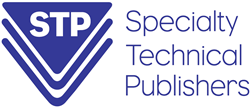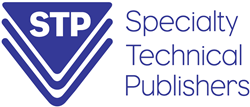
Specialty Technical Publishers
VANCOUVER, British Columbia (PRWEB)
January 16, 2020
Specialty Technical Publishers (STP) and Specialty Technical Consultants (STC) announce the availability of the newly updated International Audit Protocol Consortium (IAPC) EHS audit protocol for Victoria, Australia. Leading companies around the world use IAPC EHS audit protocols to understand the scope of their EHS regulatory obligations and rapidly collect, share, archive, and export audit findings in a cost effective manner. IAPC EHS audit protocols are now prepared by STC in partnership with STP and continue to focus on those national (plus, in some cases, regional or provincial) EHS requirements that have site-specific application for manufacturing operations. As a leading EHS management consulting firm with a global network of experienced EHS teaming partners, STC has indepth knowledge and technical expertise of local/regional EHS requirements.
STP and STC maintain leading-edge EHS audit protocols for more than 50 jurisdictions. The protocol documents are written in English and are available in MS Word, Adobe Acrobat and Excel formats, as well as through STP’s web-based portal or can be integrated into an existing company platform. Using the protocols’ custom templates and advanced functionality features, auditors can easily track audit findings and manage data over time to improve compliance, risk management and safety performance. In addition, STP’s formatting is compatible with leading risk management and sustainability platform providers.
Highlights of selected legislation covered in the newly developed protocol include:
- Victoria’s new “Dangerous Goods (Transport by Road or Rail) Regulations 2018” reflect national changes to the transport of dangerous goods. The new regulations are mainly the same as the revoked “Dangerous Goods (Transport by Road or Rail) Regulations 2008” with a few changes to numbering. These regulations came into operation on October 25, 2018.
- The “State Environment Protection Policy (Waters)” replaced the “State Environment Protection Policy (Groundwaters of Victoria)” and the “State Environment Protection Policy (Waters of Victoria)” effective October 23, 2018. The policy provides a framework for the protection and management of water quality in Victoria, covering surface waters, estuarine and marine waters and groundwaters across the state.
- The “Dangerous Goods Act 1985” was amended effective 26 September 2018 to adopt new requirements for properties that contain asbestos that was installed on the property on or after January 1, 2004.
- The “Building Regulations 2018” revoked and replaced the “Building Interim Regulations 2017” effective June 2, 2018. The new regulations largely follow the previous regulations, but have been updated and revised to reflect modern work practices and state of knowledge, and are also designed to align with the “Occupational Health and Safety Regulations 2017.”
- The national “Ozone Protection and Synthetic Greenhouse Gas Management Act 1989” and the “Ozone Protection and Synthetic Greenhouse Gas Management Regulations 1995” were updated following a review of the Ozone Protection and Synthetic Greenhouse Gas Management Program. The major change was the introduction of a phase-down of hydrofluorocarbon (HFC) imports from 1 January 2018 to enable Australia to meet the HFC phase-down obligations of the Kigali Amendment to the Montreal Protocol, starting in 2019. Other changes include the addition of new efficiency measures, including streamlining of licensing provisions, waiving uneconomic levy debts, and reduced reporting frequency.
- The national “Product Emissions Standards Act 2017” commenced on 15 September 2017, establishing a national framework to address the adverse impacts of air pollution from certain products on human and environmental health. The provisions of this Act are implemented by the “Product Emissions Standards Rules 2017.” The Act and Rules prescribe emissions-controlled products, which are marine-propulsion engines and certain nonroad engines (new spark-ignition engines with a maximum power of 19 kilowatts, or 25.5 horsepower). Only products that meet prescribed emissions standards, or have an exemption, may be imported into or supplied in Australia.
- The 2016 version of the “National Construction Code Series Volume One – Building Code of Australia” was amended out-of-cycle prior to the next scheduled update in 2019. Amendment 1 to the 2016 edition of NCC Volume One, was adopted by the Commonwealth, States and Territories on 12 March 2018. This amendment introduced a new verification method for limiting fire spread via external wall assemblies, references the revised 2017 edition of AS 2118.1 (Automatic Fire Sprinkler Systems – General systems), clarifies provisions for the use of external wall claddings and attachments, and revises the evidence of suitability provisions. The 2019 edition of the NCC was adopted by all States and the Northern Territory as of 1 May 2019.
- Victoria has adopted a new Waste Management Policy (E-waste) which became effective July 1, 2019. This policy supports Victoria’s ban on e-waste from landfills (also effective July 1, 2019), and seeks to increase resource recovery and ensure that e-waste is managed in a manner that minimizes to risks to human health and environment. The policy applies to any person who generates, collects, stores, handles, transports, or reprocesses any e-waste and establishes specific requirements for e-waste service providers.
- Victoria’s lead process regulations are being revised as part of changes included in the “Occupational Health and Safety Amendment Regulations 2018,” and will become effective on June 5, 2020. The changes will lower the workplace exposure standard for lead and make changes to requirements for lead-risk work, which include reducing the mandated blood lead removal levels, adjusting the testing frequency of workers, and reducing the blood lead levels permitted to return to lead risk work.
- The “Occupational Health and Safety Regulations 2017” were amended effective August 20, 2019, to include new requirements that are intended to address risks associated with exposure to silica dust. The requirements prescribe the minimum level of controls that must be used when cutting, grinding or undertaking abrasive polishing of engineered stone.
- The “Radiation Regulations 2007” were revoked and replaced by the “Radiation Regulations 2017” on August 27, 2017. Under the 2017 regulations, the security of high consequence sealed sources and high consequence groups of sealed sources have been strengthened, and the occupational dose limits to the lens of the eye have been lowered to reflect recent international developments.
- Victoria is making significant changes to its environmental protection legislation. The “Environment Protection Act 2017,” which went into effect July 1, 2018, revised the governance framework and objectives of the EPA. In August 2018, the “Environment Protection Amendment Act 2018,” which significantly amends the “Environment Protection Act 2017,” was passed. The 2018 amendments are expected to come into force on July 1, 2020, and will repeal the “Environment Protection Act 1970.” New regulations and standards for the implementation of the “Environment Protection Act 2017” have been proposed, and are expected to be finalized in early to mid-2020. The existing six sets of regulations under the “Environment Protection Act 1970” will be replaced by one consolidated set of regulations and some separate transitional regulations. The new regulations and standards will also replace existing State Environment Protection Policies (SEPPs), Waste Management Policies (WMPs), and Notifiable Chemical Orders (NCOs). A number of new subordinate instruments will be introduced, including Environmentally Hazardous Substance Orders (EHSOs), Obligations on Managers of Land and Infrastructure (OMLIs), and compliance codes.
For more information on all International EHS audit protocols offered by STP and STC click here.
About Specialty Technical Publishers
Specialty Technical Publishers (STP) produces technical resource guides covering environmental, health & safety, transportation, accounting, business practices, standards and law, offering comprehensive guidance on key compliance and regulatory issues. STP is a division of Glacier Media Inc., a Canadian information communications company that provides primary and essential information in print, electronic and online media. Glacier’s Business and Professional Information Group publishes directories, technical manuals, research and development materials, medical education, electronic databases, investment information and specialty websites.
About Specialty Technical Consultants
Specialty Technical Consultants, Inc. (STC) is a specialized management consulting firm working to enhance environmental health and safety (EHS) performance. Through its consulting services, STC partners with clients to strengthen management systems’ design and implementation, and identifies needs and implements solutions to meet business objectives. Services provided include: EHS compliance support; risk assessment; EHS auditing; corporate responsibility and sustainability; EHS management systems development and implementation; EHS regulatory information tools; and EHS training.
STC is certified as a Woman-Owned Business Enterprise (WBE) by the Women’s Business Enterprise National Council (WBENC) and the Supplier Clearinghouse for the California Public Utilities Commission, and as a Disadvantaged Business Enterprise (DBE) by the California Department of Transportation (Caltrans) Disadvantaged Business Enterprise (DBE) Program.
Share article on social media or email:

